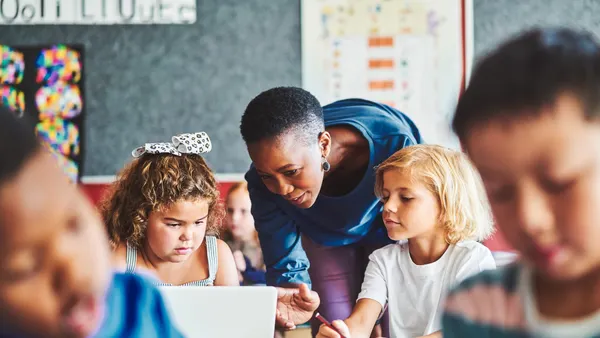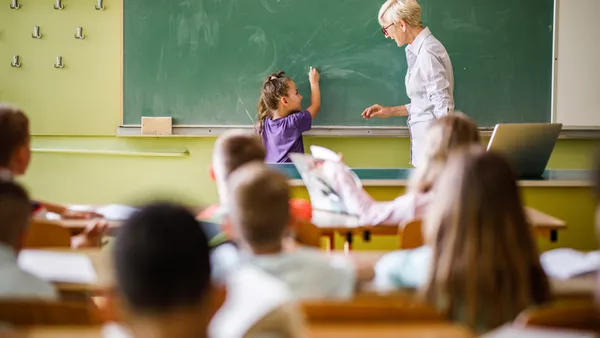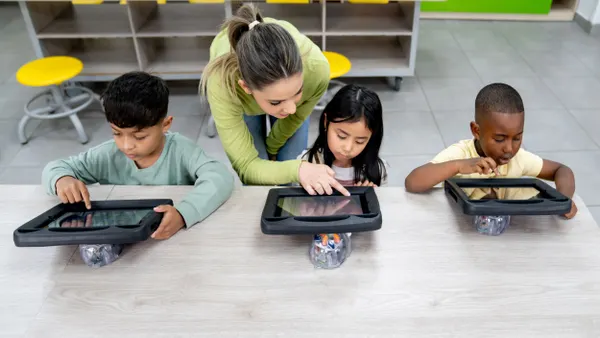Dive Brief:
- Eighth-graders at Capital City Public Charter School in Washington, D.C., must present a 40-minute portfolio presentation to prove they have the social and emotional skills to succeed in high school before being promoted, according to The Hechinger Report.
- Students receive number grades in character-related attributes, such as organizational skills, timeliness and accountability, in addition to traditional academic grades.
- The D.C. school is one of many incorporating social-emotional learning (SEL) into its curriculum, stemming from research that has shown a strong link between these so-called “soft skills” and cognitive development, the article states.
Dive Insight:
As SEL becomes increasingly integrated into the curriculum, proponents say the emphasis on character building helps students succeed not only in school, but also in the rapidly changing 21st century workforce.
One recent survey, as reported by Inside Higher Ed, found listening skills were at the top of many employers’ lists, followed by attention to detail and communication. These skills are important to educators, too. Principals who participated in a recent study by RAND Corp. strongly agreed that SEL can lead to improvements in student achievement and behavior, as well as overall school climate.
Yet some schools have struggled to implement SEL, partly due to concerns about tacking on extra programming with already limited time and funds. At SXSW EDU this year, experts shared strategies for including SEL as part of core instruction, saying that high-quality curriculum already includes aspects of SEL. In math, for example, educators should encourage creative thinking and appreciate the process of solving a problem, rather than just focusing on whether an answer is right or wrong.
Schools can seek outside, customized guidance for implementation, Laura Hamilton, the RAND study’s lead author, told Education Dive.
"This type of support could be offered through partnerships with organizations that provide SEL technical assistance or through research-practice partnerships that would enable schools and districts to try out new approaches and get feedback on how well those approaches are working and what changes they should make,” she said.











